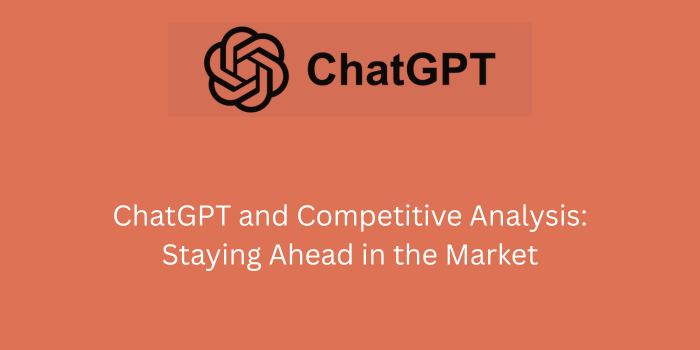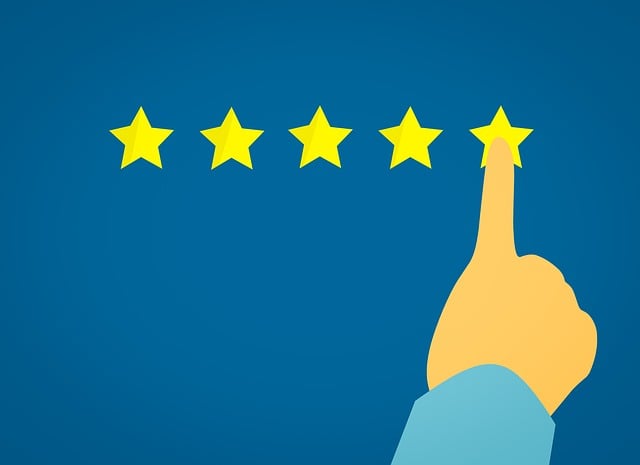In today’s hyper-competitive business landscape, gaining an edge over your competitors is not just beneficial—it’s essential. ChatGPT for competitive analysis has emerged as a revolutionary tool, helping businesses monitor trends, analyze competitors, and stay a step ahead. In this article, we will explore how you can use ChatGPT for competitive research, market analysis, and strategic decision-making to thrive in your industry.
What Is Competitive Analysis?
In today’s rapidly evolving business environment, gaining an edge over competitors is more important than ever. Many companies are now turning to ChatGPT for competitive analysis to streamline their research efforts and stay ahead in the market. Traditional competitive research can be time-consuming and expensive, but with AI tools like ChatGPT, businesses can gather insights quickly, identify trends, and make smarter strategic decisions.
By leveraging AI-driven market research, companies can monitor competitors’ activities, analyze customer sentiment, and uncover hidden opportunities. ChatGPT can assist in summarizing competitor content, comparing product features, and highlighting gaps in the market, enabling businesses to react faster and more efficiently. This advantage helps businesses refine their marketing campaigns, improve product offerings, and adapt their business strategies based on real-time data.
Integrating ChatGPT for business strategy optimization is no longer optional for companies that want to lead their industries. Those who embrace AI-powered insights will be better positioned to innovate, outperform rivals, and meet changing customer demands in a competitive marketplace.
- How Small Businesses Are Leveraging ChatGPT for Efficiency
- 44+ Best ChatGPT Prompts for Entrepreneurs to Automate, Grow, and Succeed
Why Use ChatGPT for Competitive Analysis?
There are several reasons why businesses are turning to ChatGPT for competitive intelligence:
- Speed: ChatGPT can sift through massive amounts of data quickly.
- Cost-effectiveness: Reduces the need for expensive research firms.
- Insight generation: AI can spot trends and patterns that humans may overlook.
- Customization: You can train or prompt ChatGPT to focus on specific industries or competitors.
How ChatGPT Assists in Competitive Research
Using ChatGPT for market research and competitive analysis opens up several critical applications. Businesses can quickly gather competitor data, track emerging industry trends, and analyze customer feedback.
ChatGPT also assists in content strategy evaluation, product comparisons, and performing SWOT analyses. By leveraging AI-driven insights, companies can make faster, smarter decisions that enhance their competitive positioning and drive long-term growth in a rapidly changing market.
- Using ChatGPT to Identify and Understand Your Target Market
- ChatGPT in Marketing: Crafting Compelling Campaigns with AI
1. Gathering Competitor Data
ChatGPT for competitive intelligence is a powerful tool that helps businesses identify both direct and indirect competitors quickly. By analyzing publicly available data such as websites, blogs, product descriptions, social media, and customer reviews, ChatGPT can extract key insights about competitors. It can summarize a competitor’s strengths, weaknesses, unique selling propositions (USPs), and overall market positioning.
This AI competitor analysis process allows businesses to understand where they stand in comparison, uncover gaps in the market, and fine-tune their strategies accordingly. Using ChatGPT, companies can stay agile and make smarter, faster strategic decisions in a highly competitive environment.
2. Trend Analysis
Understanding industry trends is essential for businesses that want to maintain relevance and grow in a competitive market. By staying ahead of changes, companies can adapt their strategies proactively rather than reactively. ChatGPT for market research makes it easier than ever to track and analyze these developments.
ChatGPT can process large volumes of market reports, blog posts, social media conversations, and news articles to identify patterns and highlight emerging business trends. With AI-driven insights, businesses can spot opportunities early, adjust to shifts in consumer behavior, and strengthen their positioning within the industry. Staying informed is now faster and more strategic with the help of AI.
3. Content Analysis
Analyzing your competitors’ content strategies provides valuable insights into what resonates with their audience and what falls flat. By studying their approach, you can identify successful tactics and avoid common mistakes.
ChatGPT for competitive analysis makes this process faster and more effective. It can assess the tone, target topics, SEO strategies, and overall messaging of your competitors’ blogs, social media channels, and email marketing efforts.
Using these AI-driven insights, you can fine-tune your own content strategy, boost audience engagement, and position your brand more competitively within your industry.
4. Product and Service Comparison
Want to see how your offerings stack up against competitors? ChatGPT can create comparison matrices based on features, benefits, pricing, and customer feedback, helping you identify areas for improvement or differentiation.
5. SWOT Analysis
ChatGPT can conduct a basic SWOT (Strengths, Weaknesses, Opportunities, Threats) analysis of competitors by interpreting available data sources.
How to Use ChatGPT for Competitive Analysis: A Step-by-Step Guide
Here’s a simple process to get started:
Step 1: Define Your Goals
What exactly do you want to find out? Are you analyzing pricing strategies, product features, marketing tactics, or customer satisfaction levels?
Step 2: Gather Initial Data
Use ChatGPT prompts to gather publicly available data about your competitors. Examples:
- “Summarize the key features of [Competitor Product].”
- “Analyze the blog content strategy of [Competitor Website].”
- “What are customers saying about [Competitor Name] on review sites?”
Step 3: Analyze and Interpret
Feed the data into ChatGPT for further analysis. Ask it to identify patterns, opportunities, and threats. Example prompts:
- “What are the common customer complaints about [Competitor]?”
- “How does [Competitor] position their product differently from us?”
Step 4: Strategize
Use ChatGPT’s summaries and reports to adjust your marketing, product development, or customer service strategies to outperform your competitors.
Best Practices When Using ChatGPT for Competitive Analysis
- Verify Data: ChatGPT relies on available data; cross-reference important facts.
- Use Specific Prompts: Clear, detailed prompts yield better results.
- Stay Ethical: Focus on publicly available information; avoid illegal data scraping or unethical practices.
- Combine AI with Human Insight: Use AI for data collection and initial analysis, but apply human critical thinking to interpret results.
Real-World Examples of ChatGPT in Competitive Research
Using ChatGPT for competitive research has already proven highly effective across various industries. Companies are leveraging AI-driven competitive analysis to uncover market gaps, predict competitor moves, and refine their strategies. Whether it’s startups analyzing larger rivals, e-commerce brands optimizing product listings, or tech firms enhancing their innovation pipeline, ChatGPT provides valuable market intelligence.
These real-world applications demonstrate how AI tools are no longer just optional add-ons—they are becoming essential for businesses that want to maintain a competitive edge and adapt quickly to changing market conditions.
Example 1: Tech Startups
A SaaS startup used ChatGPT to monitor product updates and blog posts from key competitors. Based on the insights, they launched a unique feature before competitors caught up, gaining significant market traction.
Example 2: E-commerce Brands
An e-commerce brand analyzed customer reviews of similar products using ChatGPT, identified frequent complaints, and designed a product that directly addressed those gaps—resulting in a 30% higher conversion rate.
Advantages and Limitations of ChatGPT in Market Analysis
Advantages
- 24/7 availability
- Scalable data processing
- Customizable outputs
- Cost-efficient compared to hiring analysts
Limitations
- Relies on the quality and freshness of available data
- May not detect nuanced market dynamics without human validation
- Cannot access paid, proprietary databases unless integrated properly
Integrating ChatGPT with Other Tools for Better Insights
For maximum effectiveness, integrate ChatGPT insights with other competitive analysis tools like:
- SEMrush: For SEO and keyword competitor analysis
- Ahrefs: To monitor backlinks and website traffic
- SimilarWeb: To analyze traffic sources
- Crunchbase: For startup competitor information
By combining AI-generated insights with traditional tools, you can achieve a more complete view of your competitive landscape.
Future of Competitive Analysis with AI and ChatGPT
The future is bright. AI models like ChatGPT are getting better at understanding context, nuance, and evolving markets. Expect even more specialized AI tools tailored for industry-specific competitive research. Soon, real-time competitor monitoring with predictive insights will become mainstream, offering unprecedented strategic advantages to those who adopt early.
Conclusion: Stay Ahead by Embracing AI for Competitive Analysis
Incorporating ChatGPT into your competitive analysis strategy can unlock powerful insights at a fraction of traditional costs. From data gathering to strategic planning, ChatGPT accelerates and enhances every stage of market intelligence. However, remember to combine AI findings with human expertise for the best results.
If you want to stay ahead in your market, integrating ChatGPT into your business toolkit is no longer optional—it’s essential.






